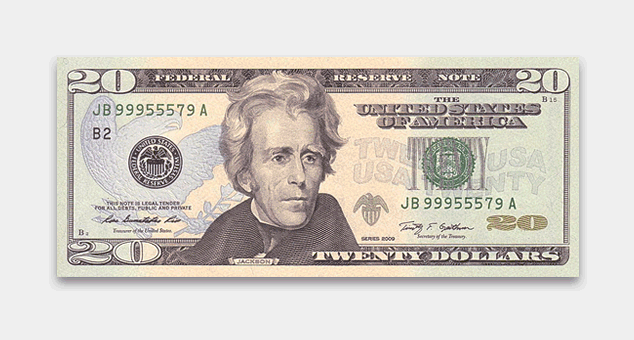Fake Money? How To Identify It.
- UnEarthed
- Feb 12, 2020
- 2 min read
By Hannah Pan
In the US, currency is issued by the Federal Reserve, a.k.a. the central bank. Among other responsibilities, like designing banknotes and calculating how many banknotes to print, the Federal Reserve Board helps maintain the authenticity of banknotes. These notes are printed by the Bureau of Engraving and Printing (BEP) and include numerous features and security measures that set them apart from counterfeit bills.
Think you have a counterfeit note in your hands? Here are a few features to look out for:
1. Security Threads
In notes worth $5 and up, a hard-to-see security thread runs vertically through the bill. Place the bill under an ultraviolet light. If the bill is not counterfeit, the thread will become visible and glow as a specific color based on the bill’s denomination—$5 notes have a blue thread, $10 notes have orange, $20 green, and $50 yellow. If you look very closely, there should be small text on the thread in an alternating pattern. For example, the $5 note’s security thread is imprinted with a repeating sequence of “USA 5”. A magnifying glass may be helpful!

2. Watermarks
Official notes ($5 and up) have a watermark to the right of the portrait. Hold the note up to the light and see if you can spot it. The watermark on the $5 note is a fancy “5”, but higher-valued notes have watermarks of that note’s portrait.

3. Color-shifting Ink
Notes valued $10 and up have numerals printed in color-shifting ink. This is located to the right of the portrait, in the lower corner. You should see the numerals shift between green and copper when tilting the note.

4. Raised Printing and Microprinting
All notes are printed using raised ink. You should be able to feel this by running your finger along the surface of the note.2 This difference can be felt more easily if the note is newer. Most notes also have microprinting on various parts of the note, which will probably require magnification to see. For example, the $10 note has “USA 10” microprinted under the torch, and the $50 note has “THE UNITED STATES OF AMERICA” microprinted in President Grant’s collar.

5. Paper Texture and Fibers
It’s hard for a counterfeit to match the unique texture of an authentic note. Official notes are made from a blend of one-fourth linen and three-fourths cotton. If you’ve handled U.S. bills before, you may be able to detect a counterfeit note just by touch. The note should also have small red and blue fibers embedded within the paper. Some counterfeiters may mimic this by printing red and blue lines on the note.
** If you really think you have a counterfeit note, contact your local police or the U.S. Secret Service (USSS) office in your region.4 The contact information for your nearest USSS office can be found at https://www.uscurrency.gov/report-counterfeit.
Sources:
Editor: Jo Ann Sun




Comments